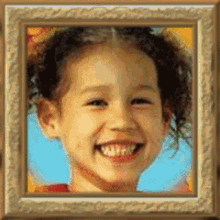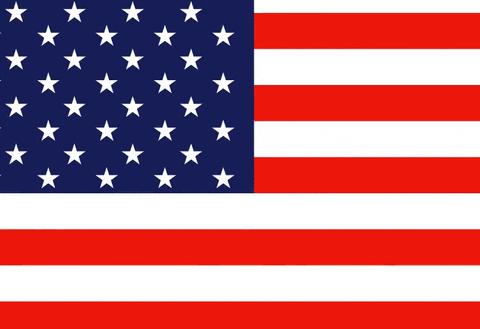







The "Every Child Matters" movement originated in Canada in response to the findings of the Truth and Reconciliation Commission (TRC) regarding the abuses suffered by Indigenous children in the residential school system.
The movement addresses the systemic issues affecting Indigenous communities and advocate for the rights, health, and empowerment of Indigenous children and youth. It emphasizes the importance of reconciliation, cultural revitalization, and ensuring that every child, regardless of their background, receives equitable access to education, healthcare, and other essential services.
Here are some additional details about the "Every Child Matters" movement and some websites that support its goals:
1. *Truth and Reconciliation Commission (TRC)*:
The movement was sparked by the TRC's investigation into the abuses suffered by Indigenous children in the Canadian residential school system. The TRC documented the experiences of survivors and made recommendations for reconciliation.
2. *Reconciliation Canada*:
Reconciliation Canada is a charitable organization that promotes reconciliation between Indigenous and non-Indigenous peoples in Canada. Their website provides resources, educational materials, and information about reconciliation initiatives, including those related to the "Every Child Matters" movement. (Website: reconciliationcanada.ca)
3. *Assembly of First Nations (AFN)*:
The AFN represents First Nations people in Canada and advocates for their rights, including the rights of Indigenous children. Their website provides information on issues affecting Indigenous communities, including education, child welfare, and reconciliation efforts. (Website: afn.ca)
4. *Indspire*:
Indspire is a national Indigenous-led charity that invests in the education of Indigenous peoples in Canada. Their website offers resources and programs aimed at supporting Indigenous students, including scholarships, bursaries, and mentorship opportunities. (Website: indspire.ca)
5. *National Centre for Truth and Reconciliation (NCTR)*:
The NCTR is a permanent archive of the materials gathered by the TRC. It serves as a resource for survivors, communities, researchers, and the public, providing access to documents, recordings, and other materials related to the history and legacy of residential schools. (Website: nctr.ca)
These websites offer valuable information, resources, and support for those interested in learning more about the "Every Child Matters" movement and its goals of reconciliation, healing, and empowerment for Indigenous children and youth.

Ottawa, Ontario, Canada, like many other cities across the country, plays a significant role in supporting the "Every Child Matters" movement and contributing to reconciliation efforts.
Here are some ways Ottawa contributes:
1. *Indigenous Organizations and Communities*:
Ottawa is home to various Indigenous organizations and communities that actively work towards supporting Indigenous children and advocating for their rights. These organizations often organize events, workshops, and initiatives to raise awareness about Indigenous issues and promote cultural revitalization.
2. *Government Initiatives*:
The municipal government of Ottawa, along with provincial and federal governments, implements policies and programs aimed at supporting Indigenous communities, including initiatives focused on education, healthcare, housing, and child welfare. These efforts align with the principles of the "Every Child Matters" movement.
3. *Education and Awareness*:
Schools, universities, and cultural institutions in Ottawa play a crucial role in educating the public about the history and legacy of residential schools, Indigenous cultures, languages, and traditions. Through curriculum integration, workshops, and community events, they contribute to raising awareness and promoting understanding and reconciliation.
4. *Community Events and Initiatives*:
Ottawa hosts various community events, such as Indigenous festivals, cultural celebrations, and reconciliation gatherings, where people can come together to learn, share, and support the "Every Child Matters" movement. These events provide opportunities for communication, reflection, and action towards reconciliation.
5. *Supporting Indigenous Businesses and Artists*:
Ottawa supports Indigenous businesses and artists through initiatives such as Indigenous art galleries, craft markets, and cultural festivals. By promoting Indigenous entrepreneurship and creativity, the city contributes to economic empowerment and cultural preservation within Indigenous communities.
Ottawa plays a vital role in contributing to the "Every Child Matters" movement through government support, community engagement, education, and cultural initiatives working towards reconciliation and the health and peace of Indigenous children and youth.

Toronto, Ontario, Canada, actively supports the "Every Child Matters" movement through its vibrant Indigenous community, educational institutions, government support, community events, and initiatives promoting Indigenous businesses and artists. Through these efforts, Toronto contributes to reconciliation, education, and the health of Indigenous children and youth in the city.

In the USA, the support for the "Every Child Matters" movement manifests through various governmental initiatives, community organizations, and advocacy efforts aimed at ensuring the health and rights of all children.
Here's how the USA supports the movement, with a focus on Alaska:
1. *Legislation and Policies*:
The US government implements legislation and policies working at addressing the needs of children, including those from Indigenous and marginalized communities. Programs such as the Indian Child Welfare Act (ICWA) seek to protect the welfare of Native American children, ensuring they maintain connections to their culture, community, and heritage.
2. *Educational Initiatives*:
Educational institutions across the USA, including in Alaska, work to promote awareness of Indigenous history, culture, and issues affecting Indigenous children. Curriculum integration, cultural competency training for educators, and partnerships with Indigenous communities are common strategies employed to support Indigenous students and foster understanding and reconciliation.
3. *Healthcare and Social Services*:
Healthcare systems and social service agencies in the USA provide support and resources for children's physical, mental, and emotional health. In Alaska, organizations such as the Alaska Native Tribal Health Consortium work to improve healthcare access and outcomes for Indigenous children and communities.
4. *Community Organizations and Initiatives*:
Non-profit organizations and community groups in Alaska play a crucial role in supporting Indigenous children and families. These organizations often provide essential services, cultural programs, and advocacy efforts focused on addressing the needs of Indigenous youth and promoting their rights and health.
5. *Cultural Preservation and Empowerment*:
Efforts to preserve Indigenous languages, traditions, and cultural practices contribute to the health and empowerment of Indigenous children. Initiatives such as language revitalization programs, cultural camps, and youth leadership development activities help strengthen Indigenous identity and pride among Alaska Native children.
Overall, the USA, including Alaska, supports the "Every Child Matters" movement through legislative action, educational initiatives, healthcare and social services, community organizations, and efforts to preserve Indigenous cultures and empower Indigenous youth. These collective efforts aim to ensure that every child, regardless of their background, has the opportunity to thrive and reach their full potential.

GABRIEL AND MICHAEL SUPPORT EVERY CHILD MATTERS.
Gabriel, representing the color orange symbolizing life and guidance, and Michael, representing the color blue symbolizing protection and truth, can be seen as supporters of the "Every Child Matters" movement in the following ways:
1. *Gabriel's Representation of Life and Guidance*:
Gabriel's association with the color orange, representing life, can be interpreted as a symbol of the importance of nurturing and safeguarding the lives of children. In the context of the movement, Gabriel's presence signifies the inherent value and dignity of every child, emphasizing the need to prioritize their health and ensure they are provided with opportunities to thrive.
2. *Michael's Representation of Protection and Truth*:
Michael's association with the color blue, representing protection and truth, aligns with the movement's goals of advocating for the safety, rights, and truth for Indigenous children. Michael's presence symbolizes the commitment to protecting children, speaking truth to power, and upholding justice.
In summary, Gabriel and Michael, representing life/guidance and protection/truth respectively through the colors orange and blue, symbolize the core principles of the "Every Child Matters" movement. They stand as guardians and advocates for the health, rights, and truth of every child, emphasizing the importance of nurturing and protecting them to ensure they have the opportunity to live fulfilling and empowered lives.








